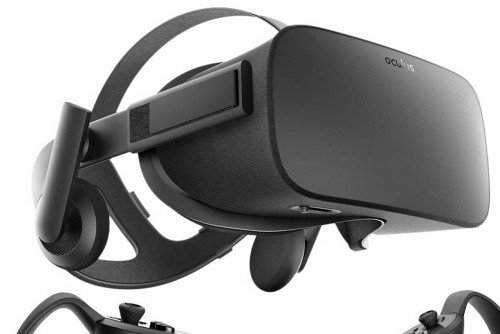
By Samia Williams
Although it may sound far-fetched to some, the usage of virtual reality (VR) and augmented reality (AR) in the classroom can “transform the classroom experience for students,” according to Walden University's researchers. Even though it may sound like an unlikely practice, the concept of utilizing the world’s newest technology in an educational setting isn’t anything new at all. Since the beginning of the technological revolution, we’ve been consistently implementing the technological advancements being made outside the classroom, inside the classroom, in order to meet the needs of every generation of student.
From the introduction of radios in the classroom in 1923, to overhead projectors in 1930s, televisions in 1938, whiteboards in the 1960s, and calculators in ’67, modern technology has, and always will, be a valuable tool in an educational setting—if not, a required tool for students to excel academically by this time in 2021. As most of us rely on technology to get by during our day-to-day, who says it’s not feasible to see how we can further immerse students in an educational setting with AR/VR?
 According to John O’Hagan, Lindenwood University’s Performing Arts Director, as of current, there are three Performing Arts faculty members of Lindenwood University that are doing some preliminary exploring with AR/VR technology—himself in Theater, Tricia Zweier in Dance, and Adam Donohue in Music— in order to “increase [their] ability to more directly connect our students with the depth and breadth of artistic practices far beyond the Lindenwood campus.” Together they seek to provide students not only with the skills to master the arts under their mentorship, but to also give them an opportunity to test those skills out and experiment with those skills in a setting that would be more universal as a result of technology.
According to John O’Hagan, Lindenwood University’s Performing Arts Director, as of current, there are three Performing Arts faculty members of Lindenwood University that are doing some preliminary exploring with AR/VR technology—himself in Theater, Tricia Zweier in Dance, and Adam Donohue in Music— in order to “increase [their] ability to more directly connect our students with the depth and breadth of artistic practices far beyond the Lindenwood campus.” Together they seek to provide students not only with the skills to master the arts under their mentorship, but to also give them an opportunity to test those skills out and experiment with those skills in a setting that would be more universal as a result of technology.
Lindenwood’s entire motto is quite literally “Real Experience. Real Success,” and AR/VR is expanding the definition of what we define as experience which allows us to expand how we assist our students in their endeavors towards their success. Now, students have the potential for direct interaction, and Prof. O’Hagan is interested in "exploring how performance, directing, design and stage management classes might engage. Again, what might be achievable in the short run would be immersion into an onstage experience from a performer or stage manager’s point of view, or “being” in the rehearsal hall for a particular production/company.”
With the AR/VR capabilities of the Oculus Rift, Prof. O’Hagan sees ripe potential in what this new technology could bring to the table at Lindenwood. Specifically, he divulges that “as the technology expands and becomes more universal and accessible, the ability to get a much more vivid and direct connection to the totality of theatrical traditions and practices from around the word increases.” When reflecting on how AR/VR would directly impact Lindenwood's theatre program, Prof. O’Hagan focuses on how the technology would “not only serve to lift the study of say, theatre history, out of the textbook and into a much more immediate engagement, but it would [also] allow students to have a much broader and immediate understanding of the art form from a wider variety of cultures.”
With this immersive technology, students are able to take advantage of some of the “immediate opportunities that present themselves,” like being able to transport themselves from the classroom to a “variety of different theater spaces (both historical and contemporary) around the globe.” This capability is a reflection of the fact that there's no limit to how technology can assist us in this world, merely a race to figure out which technological “thing" benefits us in which way first: so, logically it’s a race also happening in pedagogy, and Lindenwood has got a comfortable head start.
Whether you use AR/VR to explore "anatomy and physiology in [Lindenwood’s] Voice and Movement classes, so the AR/VR applications open up possibilities for performance students to get a “3-D” connection to what is actually happening in voice and body (much like biology or pre-med students),” or allow design students to gain “'hands on' engagement with scenic, costume and light design practices” you’re a skilled educator taking advantage of the newest technological “thing” to ensure your students are equipped with the best experience that helps them in their successes, just like John O’Hagan.
I mean, let’s be honest: if we’d all like to be able to do pop on some goggles and travel leisurely at zero expense, why not allow students to pop on some googles to better expand their individual capabilities in their creative field?

The Linden Gold
The Linden Gold is a student operated organization focusing on promoting the academic success and achievements of Lindenwood. Through stories about alumni, current students, and faculty alike, The Linden Gold strives to engage with the St. Charles Community and showcase the unique greatness of Lindenwood.












